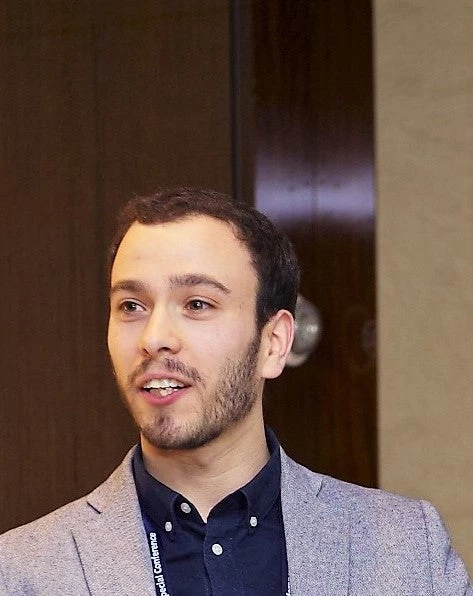Note: A more recently updated version of the numbers and chart below is available here.
In our previous post, we estimated that COVID-19 was responsible for 71 million to 100 million additional people falling into extreme poverty in 2020 (measured using the international poverty line of $1.90/day). Since the time of this analysis, we have integrated new data into PovcalNet—an online tool provided by the World Bank for estimating global poverty. This leads us to revise both the estimated number of poor pre-COVID-19 and the estimated number of poor who have fallen into extreme poverty due to COVID-19. According to the new estimates, 9.2% of the global population or 689 million people lived in extreme poverty in 2017. As explained here, the update involves the revision of the 2011 PPPs and new survey data for Nigeria among other changes (for details see Castaneda et al.). This has led us to also revise our analysis of the effects of COVID-19, and we now estimate that the COVID-19 pandemic is likely to push between 88 and 115 million people into extreme poverty in 2020, setting back poverty reduction by around three years. These new estimates are also included in the Poverty and Shared Prosperity report, which was published today.
As before, we calculate the COVID-19-induced poor by comparing poverty using the growth forecasts from the June 2020 and January 2020 editions of the Global Economic Prospects (GEP). The January-GEP acts as the counterfactual series for poverty in a world without COVID-19. The June-GEP vintage provides two growth forecasts: (a) COVID-19-baseline scenario (contraction of global growth by about 5% in 2020), and (b) COVID-19-downside scenario (contraction by about 8% in 2020). The additional poor induced by COVID-19 are estimated as the difference in poverty derived from using the June-GEP forecasts against the January-GEP forecast.[1]We estimate that an additional 88 million people will live in extreme poverty in 2020 as a result of COVID-19 and that this number could rise to 115 million under the COVID-19-downside scenario with more severe economic impacts of the pandemic. These estimates are presented in Figure 1. Regional estimates can be found here.
Figure 1: The impact of COVID-19 on global extreme poverty
Figure 2 shows the regional breakdown of the additional poor as a result of COVID-19. This figure (not shown in the blog) compares these estimates with the earlier updates. With the new PovcalNet data, the additional poor as a result of COVID-19 increases significantly at the $1.90 poverty line while the impact at the higher lines is more muted. For example, the COVID-19-induced poor increases from 71 million (June-baseline) to 88 million (September-baseline) at the $1.90 line, compared with a slight decrease from 176 to 175 million at the $3.20 poverty line. A large share of the upward revision at the $1.90 line is due to South Asia, where we have updated the estimate for India in 2017/2018 (in addition to the changes in PPPs, see Castaneda et al.). But despite these changes, the regional composition of the COVID-19-induced poor in 2020 remains very similar: Most of the new poor at the extreme poverty line, as well as the higher poverty lines, live in South Asia. This is followed by Sub-Saharan Africa at the $1.90 line and East Asia and Pacific at the $5.50 line.
Figure 2: The regional distribution of COVID-19-induced poor, 2020
Another way to gauge the severity of COVID-19 on global poverty is to compare the COVID-19 shock to other shocks that have increased poverty in the past. In fact, the only other shock that has increased global poverty in the last 30 years was the Asian financial crisis of 1997/1998. Poverty was decreasing prior to both shocks. Whereas the Asian financial crisis increased poverty by 1.3% in 1998 relative to 1997 (from 29.6% to 30%), the COVID-19 pandemic is expected to increase poverty by 8.1% in 2020 relative to 2019 (from 8.4% to 9.1%). The increase would be even greater with the September-downside scenario which projects poverty to have increased by 12.2%. We know what happened after the Asian financial crisis; global poverty declined on average by 3.8% in the next five years. The COVID-19 pandemic, however, is still evolving and longer-term forecasts are not available. Using the data and projections available now, it appears that COVID-19 has already been the worst reversal on the path towards the goal of global poverty reduction in at least the last three decades.
Figure 3: Comparing the impact of the COVID-19 pandemic to the Asian financial crisis
We gratefully acknowledge financial support from the UK government through the Data and Evidence for Tackling Extreme Poverty (DEEP) Research Programme.
[1] As before, we use a 0.85 global pass-through to adjust the growth rates for the projected years, i.e. 2019-2021 (for details on the pass-through calculation see Lakner et al. 2020). We use the June 2020 forecasts from GEP for all scenarios for 2019. For the COVID-19 affected years (2020 and 2021), we use the January-GEP forecasts for the pre-COVID-19 scenario, and the June-GEP forecasts for the two COVID-19 scenarios. Note that our previous blog used the January 2020 GEP growth forecasts for the pre-COVID-19 scenario in 2019 (in addition to 2020 and 2021). Therefore, we found a difference in projected poverty under the pre-COVID-19 and the COVID-19 scenarios in 2019. To calculate the number of additional poor attributable to COVID-19 in 2020 and 2021, we used a difference-in-differences methodology. Here, we use the simple difference for 2020 and 2021, since June-GEP is used across all scenarios in 2019. The difference in the number of poor due to the two methodologies is less than 1 million.







Join the Conversation